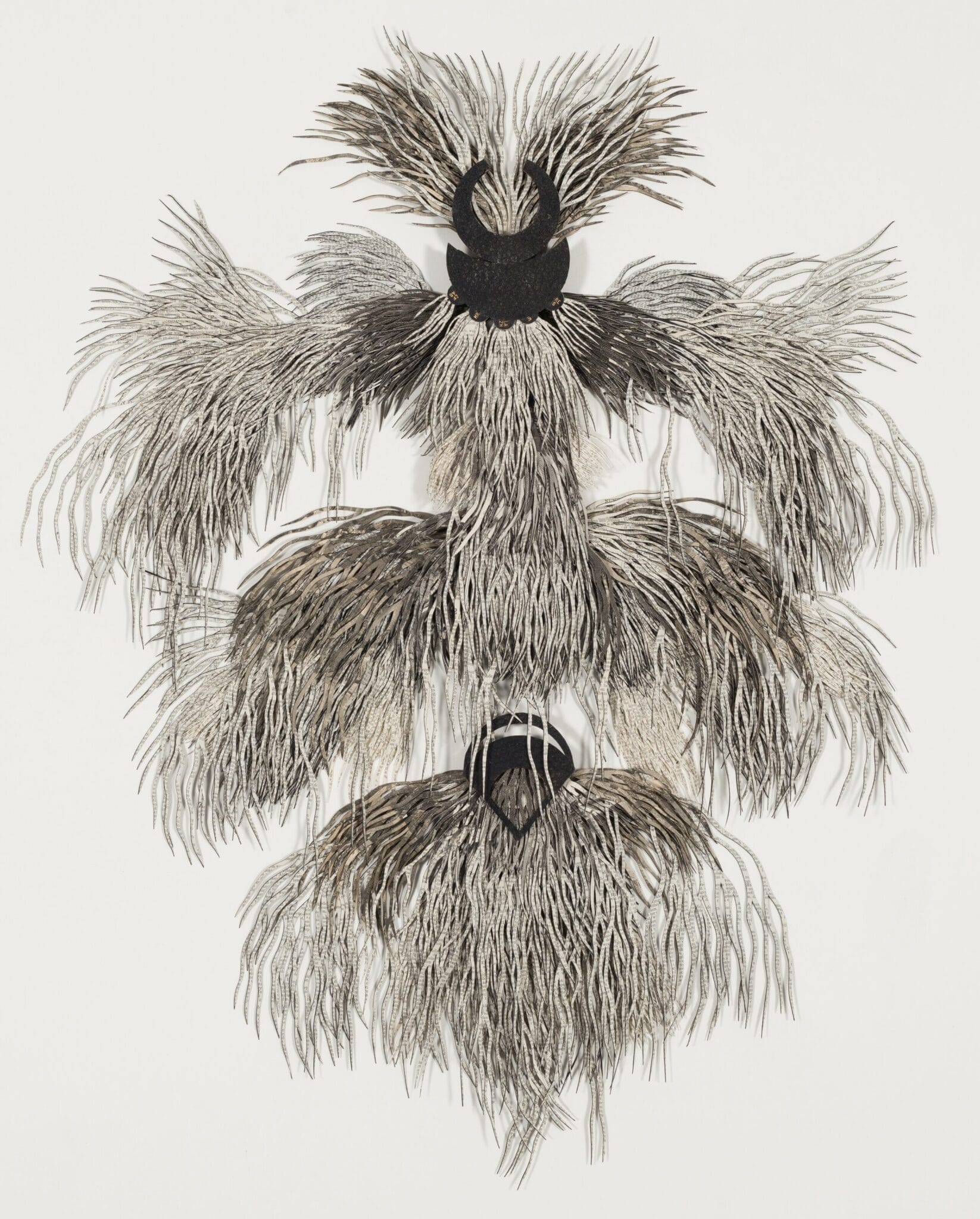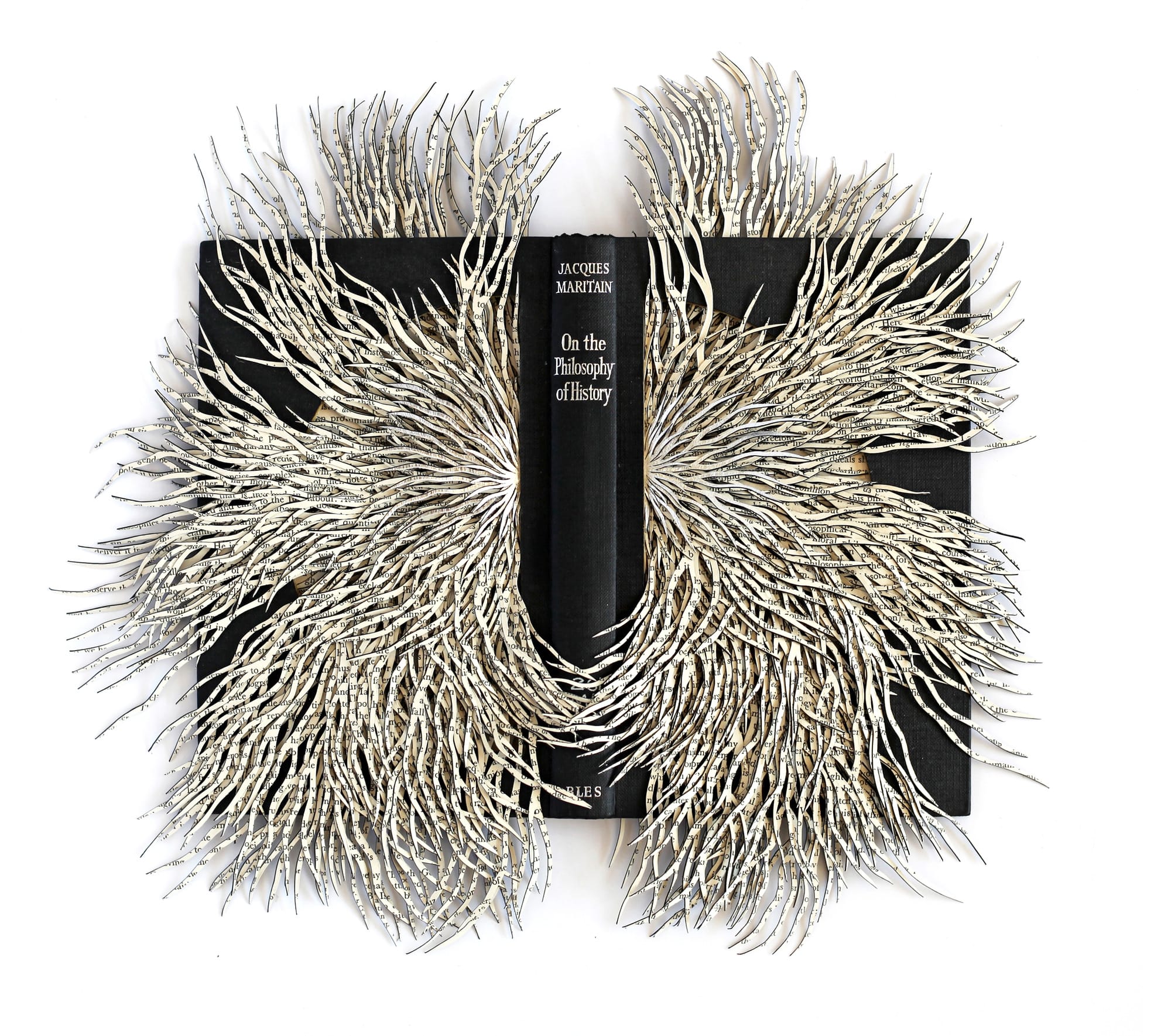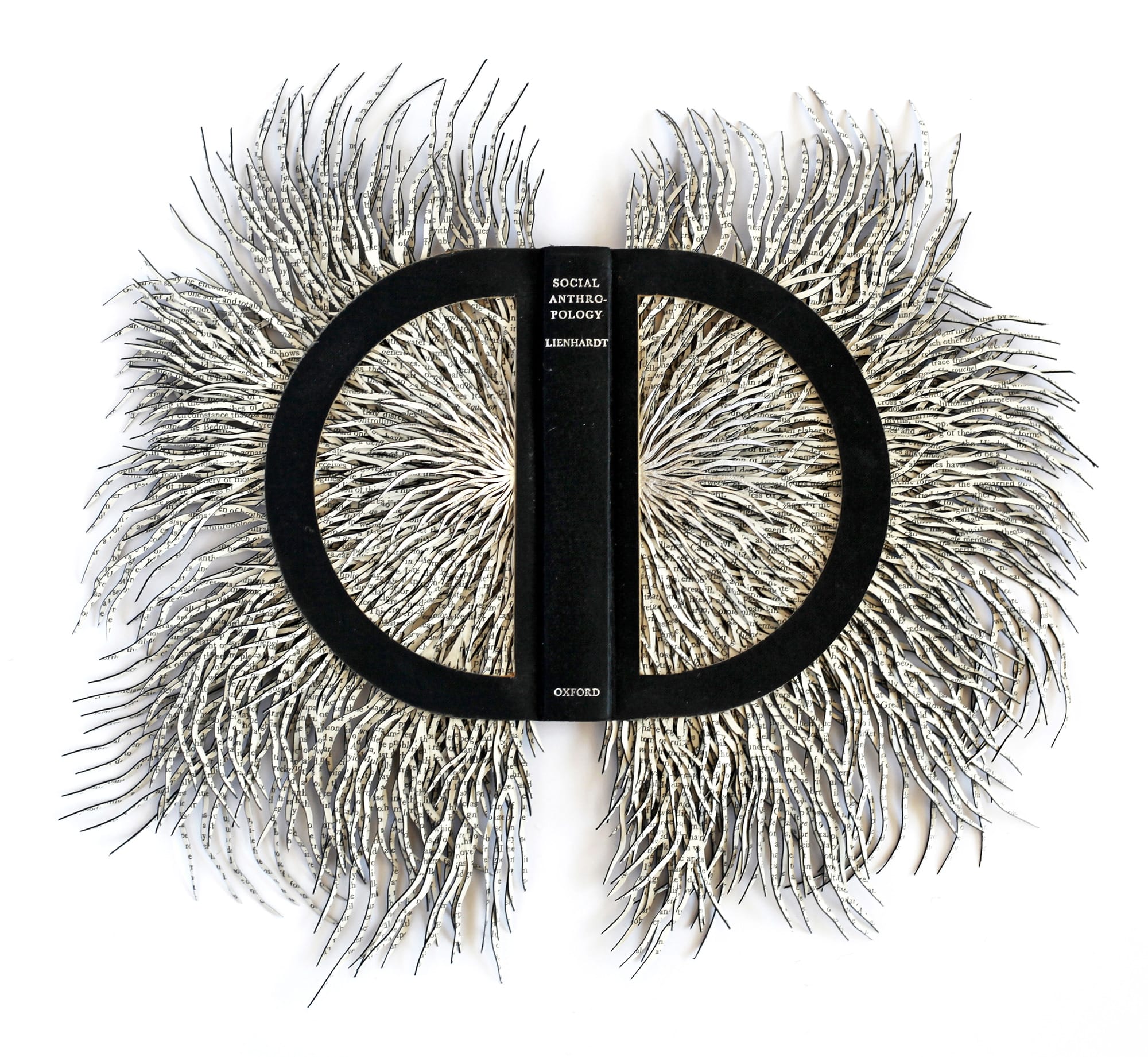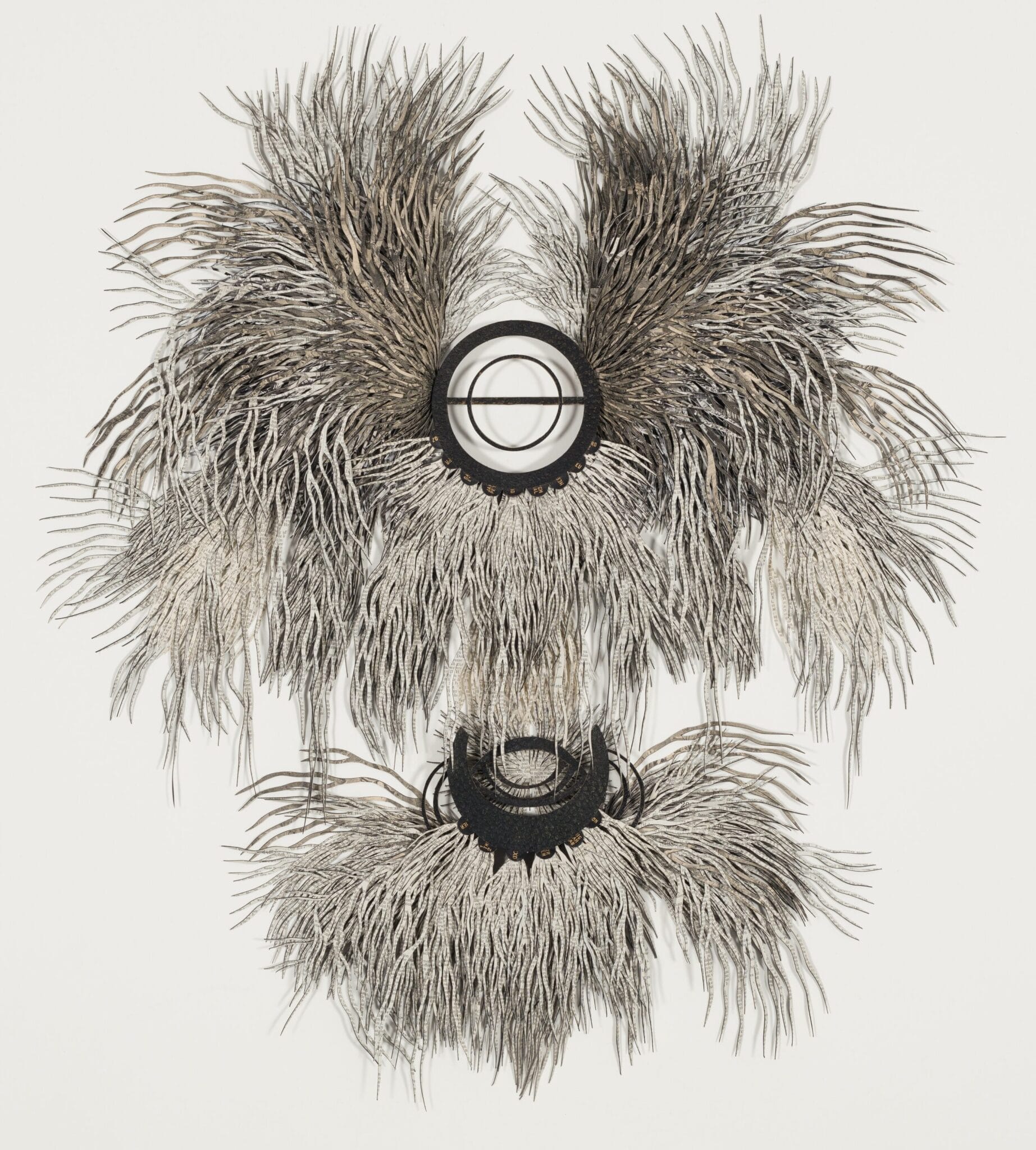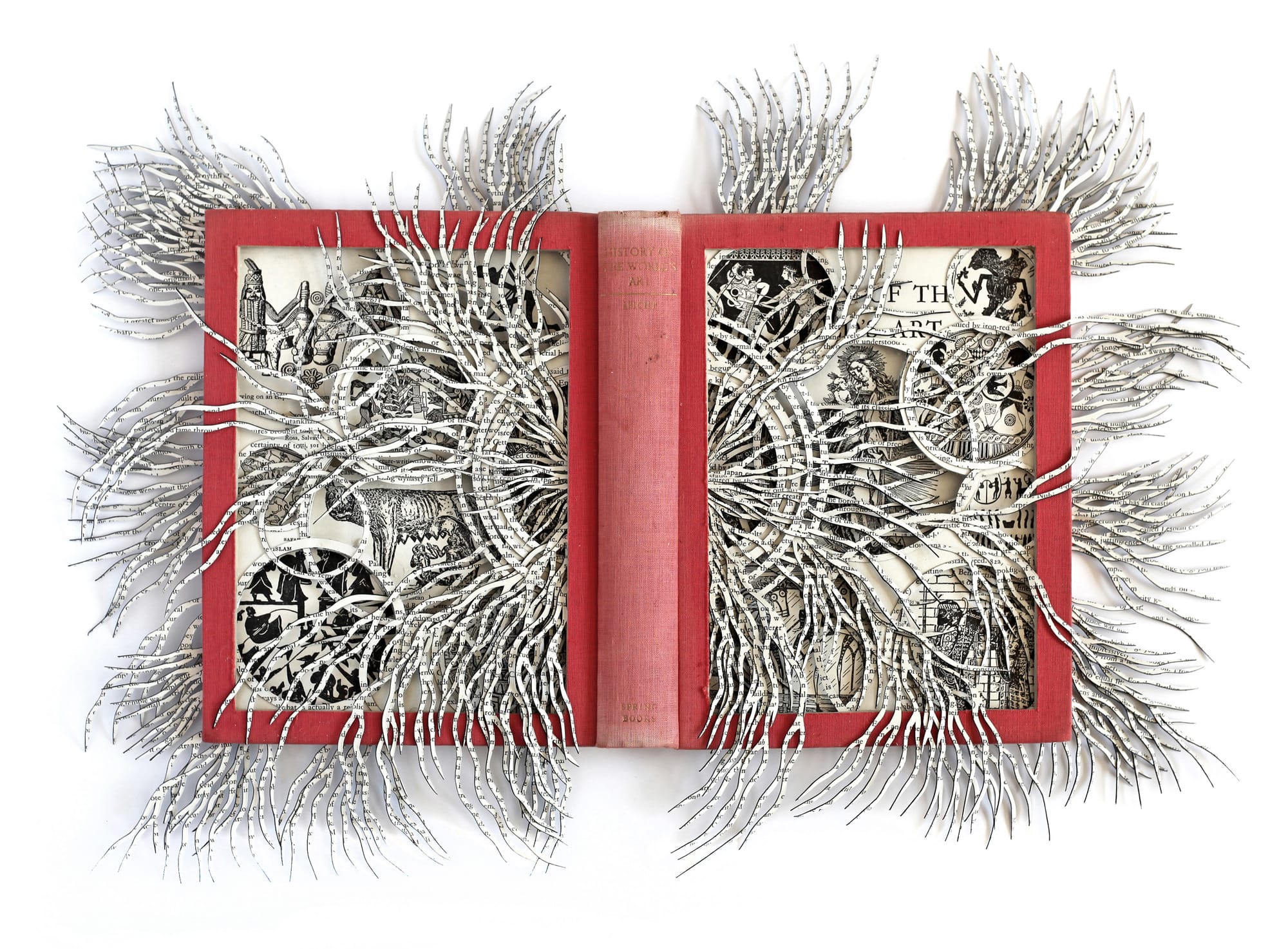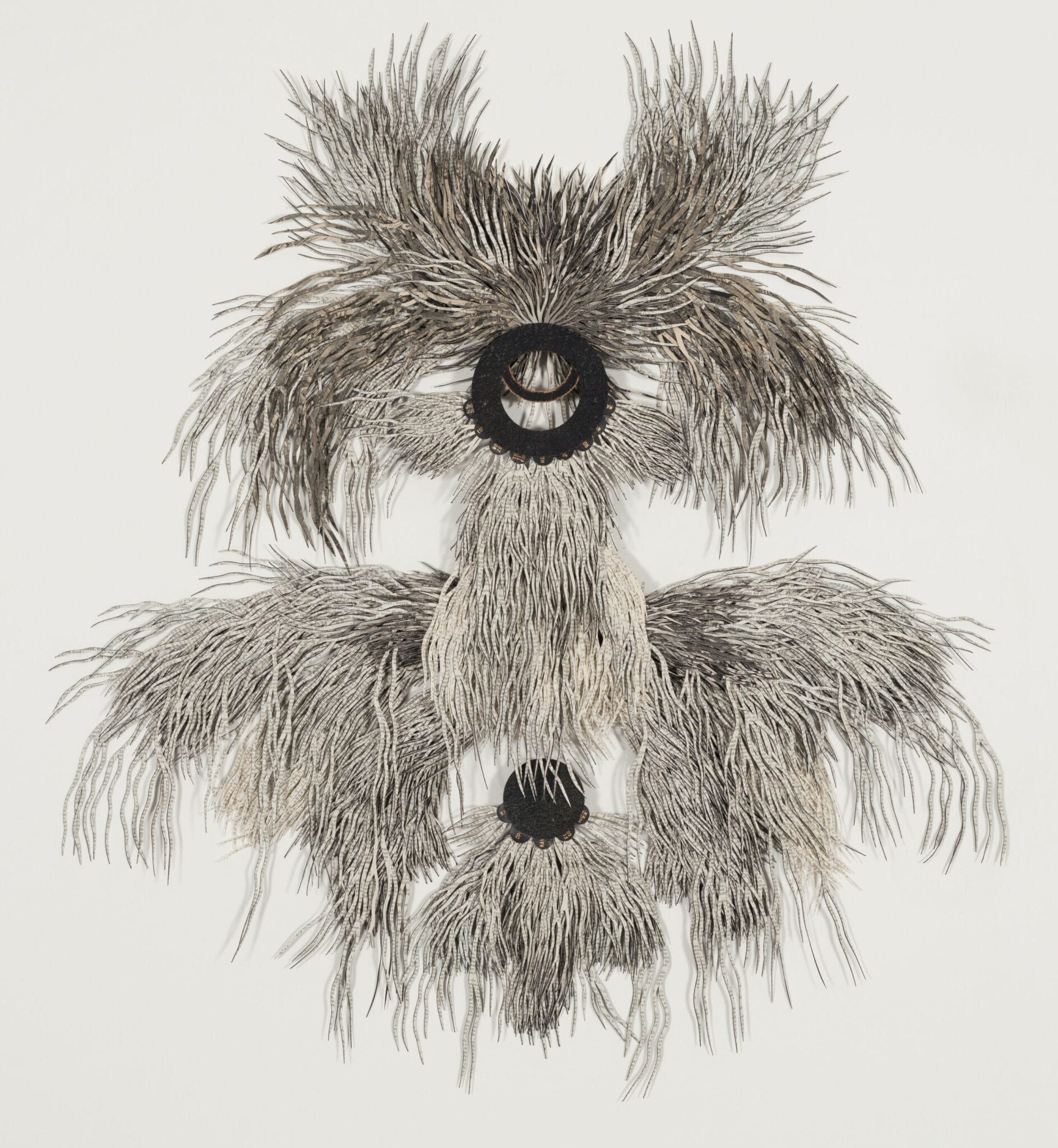While hefty hardcover reference books often represent prestige and historical significance, their extensive content can evoke a sense of intellectual overwhelm. These books, filled with dense and complex ideas, evoke the Paradox of Knowledge, which suggests that the more we learn, the more we become aware of our own ignorance.
This intriguing gap between what is known and unknown is a central theme in Barbara Wildenboer‘s art. Based in Cape Town, Wildenboer utilizes secondhand books encompassing diverse languages, worldviews, and subjects such as philosophy, art, history, music, biology, and archaeology. With a keen interest in linguistics and writing systems, she seeks to unravel the ways in which we assign meaning to symbols.
Using a scalpel and scissors, Wildenboer meticulously transforms numerous book pages into slender, capillary-like strips that radiate from the book’s spine. Her symmetrical sculptures evoke naturally mirrored forms, such as the brain’s hemispheres connected by the corpus callosum, the wingspan of a death’s-head hawkmoth, and the Rorschach inkblot.
Through her work, Wildenboer explores the act of interpreting texts. Her biography states, “she cuts through these dense and claustrophobic discourses, rendering them mute.” By altering the books to the point of illegibility, she reshapes familiar characters into entirely new glyphs.
Discover more of her art on her website and Instagram.
